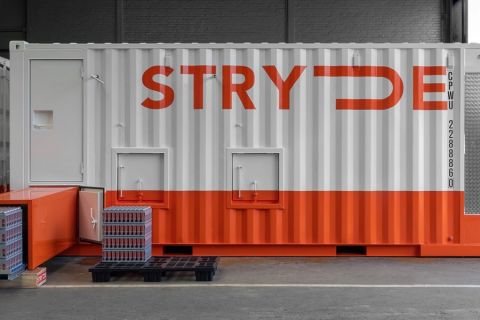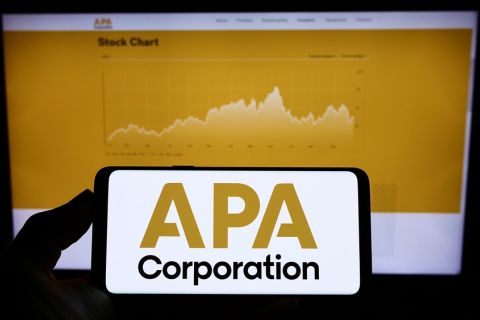
Sonatrach and its foreign partners started production from several gas projects during the last few months. (Source: Sonatrach)
Algeria’s effort to monetize its huge shale gas reserve is moving slowly as the country boosts production from its conventional reserves.
Energy Minister Mustapha Guitouni said early that his country was already preparing to exploit shale gas to boost the country’s declining output after failed attempts in past years due to protests over pollution fears by residents in affected areas. “Evaluation studies on shale gas potential are going on. This will take five to 10 years,” he said without providing further details.
Algeria started discussions with oil majors, including BP and Anadarko, to help evaluate and exploit shale gas. “We hope these discussions will lead to talks over possible contracts,” Arezki Hocini, head of the National Agency for the Valorization of Hydrocarbon Resources (Almaty), told local media.
Meanwhile, Algeria is making progress with its plans to boost conventional gas production. The country planned to increase annual gas production to 95 billion cubic meters (Bcm), of which 42 Bcm would be for domestic use and 53 Bcm for exports. In 2017, Algeria exported about 56 Bcm in 2017, of which 39 Bcm were gas exports by pipeline and 17 Bcm were LNG exports.
Sonatrach and its foreign partners started production from several gas projects during the last few months.
Sonatrach announced on March 27 the start of production from the Timimoun natural gas project. The field is owned by Groupement Timimoun (GTIM), a joint venture between Sonatrach (51% interest, France’s Total (37.75%) and Spain’s Compañía Española de Petróleos (11.25%).
Sonatrach said in a statement that the field produces 1.8 billion cubic feet of gas. A total of 37 production wells have been developed to tap eight structures spread across 2,500 sq km. This includes Barouda, Barouda Nord, Afflisses, Abiod, Hassi Yakour, Drina, Irharen and Irharen South.
In December 2017, Sonatrach and its partners at the Groupement Reggane Nord (GRN) consortium announced production from four of six Reggane Nord gas fields commenced successfully on Dec. 13, 2017. Output is set to reach 8 million cubic meters per day at peak, giving Algeria’s maturing upstream sector a new boost.
Exploration activities started in 2002. The field development plan was approved Nov. 30, 2011, followed by the foundation of the Groupement Reggane Nord—with Sonatrach (40% stake) andpartners Spain’s Repsol (29.25%), Germany’s DEA (19.5%) and Italy’s Edison (11.25%)—and the start of field development in 2012.
The Reggane Nord project, which is made up of the Reggane Nord, Kahlouche, Kahlouche South, Sali, Tiouliline and Azrafil Southeast field, has estimated gas reserves of 88.6 Bcm, of which 55 Bcm are recoverable. The development plan is for production of 2.76 Bcm/year over 12 years.
Meanwhile, Sonatrach announced in 2017 that it will delay the start of the southern Touat gas field until first-half 2018, almost a year later than planned. “Of the 21 wells, only three are ready to come online,” Sonatrach CEO Abdelmoumene Ould Kaddour told reporters. “I acknowledge that our business in the deep south is very difficult, very complex, but definitely we need to improve our efficiency. We are always late. It is becoming very serious.”
Touat regroups 10 gas fields with 2P reserves estimated at 68.5 Bcm of natural gas and 8.5 million barrels of condensates. Expected output is 4.5 Bcm of gas and 630,000 barrels of condensates per year in the plateau phase over 27 years. Groupement TouatGaz is the operating company of the field (35% Neptune, operator; 30%, Engie; and 35%, Sonatrach).
Sonatrach launched a new gas pipeline pumping from southwestern fields, including Reggane North, Touat and Timimoun, with capacity of 8.8 Bcm per year.
In addition, Sonatrach intends to boost gas production at the Hassi Messaoud Field by 3.6 Bcm/year and will increase the gas output of the neighboring Rhourde El Baguel oil field by 2.2 bcm/year. Rhourde El Baguel is located 80 km from Hassi Messaoud and both are in the Ouargla province, 600 km south of Algiers. At Rhourde El Baguel, Sonatrach currently focuses on oil production and flares 17 Mcm/d of gas; the company will then market 6 Mcm/d and re-inject the remaining 11 Mcm/d to improve oil recovery.
Recommended Reading
ChampionX Releases New Plunger Lift Well Solution
2024-09-13 - The SMARTEN Unify control system is the first plunger lift controller in ChampionX’s SMARTEN portfolio.
STRYDE Awarded Seismic Supply Contracts in Mexico
2024-09-03 - STRYDE was awarded two seismic node supply contracts in Mexico, the company’s first projects in the country.
Companies Hop on Digital Twins, AI Trends to Transform Day-to-day Processes
2024-10-23 - A big trend for oil and gas companies is applying AI and digital twin technology into everyday processes, said Kongsberg Digital's Yorinde Lokin-Knegtering at Gastech 2024.
Chevron Launches New Hydraulic Fluid for Marine, Construction Use
2024-09-10 - Chevron said its Clarity Bio EliteSyn AW hydraulic fluid meets or exceeds the biodegradation, toxicity and bioaccumulation limits set by government regulations.
APA, Palantir Expand Partnership to Deploy New AI Across E&P Operations
2024-09-25 - APA Corp. will introduce new AI capabilities to its oil and gas operations with Palantir Technologies’ Artificial Intelligence Platform (AIP) software.
Comments
Add new comment
This conversation is moderated according to Hart Energy community rules. Please read the rules before joining the discussion. If you’re experiencing any technical problems, please contact our customer care team.






